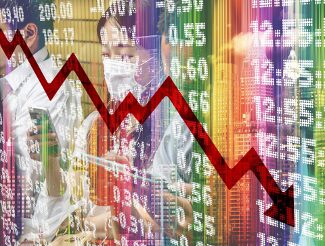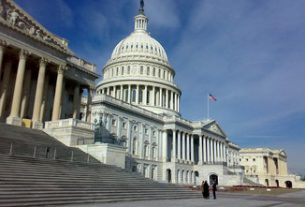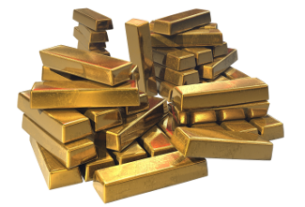We’ve been warning about an oncoming financial crisis for a while now. The fact that a financial crisis would occur was all but inevitable, given the massive bubble blown by the Federal Reserve’s extraordinarily loose monetary policy over the last 12 years. But despite the numerous warning signs that markets were flashing, many investors just didn’t want to heed those warnings. Not even financial media, which should have known better, heeded the warnings. And now we’re in the middle of a full-blown crisis, which hasn’t even run its course yet, with a whole lot more to come.
It was only last month that stock markets were reaching record highs and stock market bulls were gloating over the disappearance of the bears. And now here we are, with stock markets having lost nearly a third of their value and the effects of coronavirus weighing heavily on the outlook for the rest of the year. Let’s recap some of the headlines we’ve seen over the past few months.
- December 15: US Economy Shakes Free of Recession Fears in Striking Turnaround Since August
- December 17: What Recession? Investors Surveyed by Bank of America Just Reported a Record Jump in Economic Optimism
- January 2: What Recession? Pessimism Recedes for Global Economy in 2020?
- January 3: Fed Officials Saw Decreased Recession Risk at December Meeting
- January 20: Risk of US Recession Has “Largely Faded,” ACT Reports
- February 10: Fed: Recession Less Likely But Coronavirus Fallout a New Risk
We’re now nearing the end of March, and the Federal Reserve is in full-blown crisis mode. The Fed has:
- Pledged up to $5.5 trillion in repo market liquidity;
- Cut its target federal funds rate to zero;
- Promised at least $700 billion in quantitative easing;
- Re-opened the Commercial Paper Funding Facility, the Primary Dealer Credit Facility, and the Money Market Mutual Fund Liquidity Facility;
- Opened up US dollar swap lines with numerous foreign central banks.
In essence, we’re right back to where we were in early 2009, when stock markets were bottoming out and the country was going through the worst part of the financial crisis. Only today, we’re still nowhere close to the worst part of the crisis.
Most parts of the country are just beginning what could be a weeks-long shutdown that will cripple economic growth. The Fed has fired its bazookas, with little effect, and stock markets will only decline further as the full effects of the shutdown trickle through the economy. With the Dow having broken below the 20,000-point barrier, don’t be surprised to see 15,000 or even 10,000 as new lows by the time all is said and done.
Hope springs eternal in many investors’ minds, however, and the crash has come so suddenly that many still hold out hope that the Dow will get back to 30,000. That’s highly unlikely, even with trillions of dollar of QE. Investors need to prepare themselves for that reality, take measures like investing in gold to protect their assets, and get ready for yet another long, unsteady, and turbulent recovery once we’re through this mess.
This article was originally posted on Goldco.




